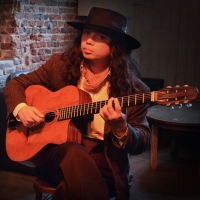DjangoBooks.com
Welcome to our Community!
Categories
- 20K All Categories
- 1.1K General
- 478 Welcome
- 59 Archtop Eddy's Corner
- 146 CD, DVD, and Concert Reviews
- 385 FAQ
- 26 Gypsy Jazz Italia
- 27 Photos
- 207 Gypsy Picking
- 21 Unaccompanied Django
- 15 Pearl Django Play-Along Vol.1
- 17 Gypsy Fire
- 45 Gypsy Rhythm
- 1.4K Gypsy Jazz University - Get Educated
- 131 Gypsy Jazz 101
- 228 Repertoire
- 223 History
- 708 Technique
- 51 Licks and Patterns
- 6 Daniel Givone Manouche Guitare Method Users Group
- 20 Eddie Lang Club
- 1.3K Gypsy Jazz Gear
- 805 Guitars, Strings, Picks, Amps, Pickups and Other Accessories
- 461 Classifieds
- 49 Recording
- 62 Other Instruments
- 18 Violin
- 5 Mandolin
- 22 Accordion
- 7 Bass
- 10 Woodwinds
- 348 Gypsy Jazz Events
- 143 North America
- 110 Europe
- 95 International
In this Discussion
Top stress
A little concerned here. I have shimmed the bridge on my DG-300 to eliminate any buzzing, but I'm worried that this may be putting too much pressure on the top causing it to loose it's dome. It does seem to have flattened out a bit (in the bridge area). When I got the guitar, it had no shims, of course, but the strings from the third on down had some buzzing.....hence the shims. I'm using Argies 11's. I keep this guitar and all my solid wood guitars in a humidified display case which does a good job of maintaining ~40-50% RH. I have not messed with the truss rod on this guitar (mainly because of its awkward location). It just seems like the guitar had a much more pronounced dome when I first got it. Am I worrying needlessly? I'm wondering if I should kick the shims out and try adjusting the truss rod.
Thanks,
Tom
Thanks,
Tom
Why do they call it a rest stroke......I get tired every time I try playing like that.









Comments
And yes, I have drug my feet on getting a new bridge from Josh, but I think it's time.
Thanks,
Tom
About action & pressure: In general, if you take a GJ guitar up much past about 3.2mm you start to run into significant intonation problems from string stretching - and that's still a bit south of where you'd need to be to put too much pressure on the top with 11s. So, if the guitar is unaltered (braces not trimmed) and in good condition (no catastrophic repairs that may be slipping etc.) you should be fine with an action of between 2.5mm and 3.2mm. Don't sweat the truss rod. All it does is alter the curve of the fretboard between the ~2nd and ~10th frets. If you fret at the 1st and 12th frets and you can pluck the string (in other words, the neck is not backbowed - pinning the string to the frets between) you're probably fine on truss rod adjustments. Too much bow in a neck and all of a sudden your guitar will start to act like you have a bump over the neck join. Any more than a couple thousanths of an inch of truss-rod induced relief and you actually start causing problems.
I got concerned because having flared the ends of the stock bridge as I had read in a thread here, plus having it now sit higher on shims (and assuming therefore more downward pressure on the top) that I had focused the downward pressure in a smaller area than originally covered by the bridge in its stock configuration. Probably just convinced myself that the top was depressed in the area of the bridge. I knew it couldn't be because of a lack of moisture in the wood as all my guitars live the life of Riley in their climate controlled case.
Anyway, I'll keep an eye on it, but for now, I'll chalk it up to having something new and being a little too nervous about its condition. Really like this guitar. I would throw my Taylor in front of a bus to save my JJ DG-300.
Tom
I bought an Eimers guitar, not knowing that the tailpiece shouldn't touch the top of the guitar at all, and was scammed by the seller. To be fair, of course, he says it was fine when he sold it to me, but he is also the guy who had a reason to change the bridge. I should have probed more on that question. It just didn't occur to me that a bridge change can be a sign of a problem.
So, just wanted to share this info so nobody else falls prey. Basically 2 things:
These are things that perhaps could have been on a general "buying checklist", if such a thing existed.
Where is the tailpiece touching the top on your guitar? Hard to see from the pictures in that link.
A small-footprint shaved-to-paper-thin beveled shim that sits under the treble bridge foot (there’s a brace beneath it) is fine, I’ve seen it, use one myself, have made them for other players. If you want to be extra niche-y about it, you can use the same wood as the bridge is made from (which I did). Or, just shim with a thin pick (cheap, available everywhere, flexes, won’t cause any finish or acoustic harm).
Fwiw worth, my ALD guitar is super-stable but I can hear little-noisy changes during the cold/dry months on the B and G strings, or during shoulder seasons when playing outside. Ergo, I shim…but just a little tiny bit sometimes. (If anybody didn’t already know, in the Midwest North US, we have gigantic temperature and humidity swings, this year 130F difference from coldest to hottest, so far in 2021)